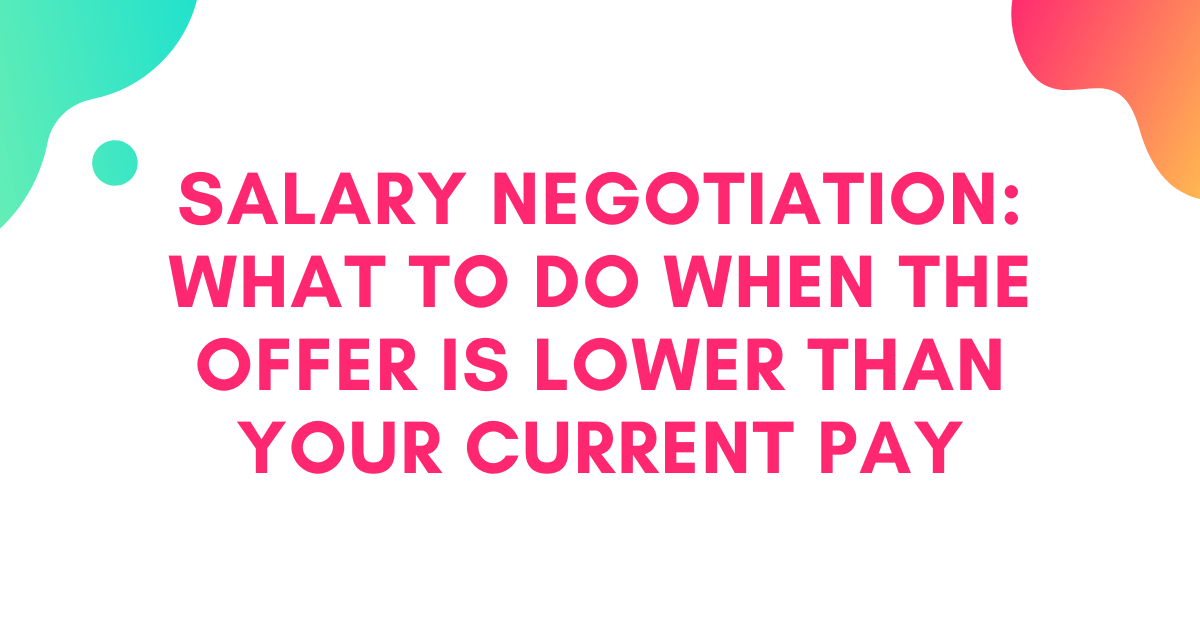Avoid This Trap: The Unwritten Rule of Salary Negotiation
Cindy Gallop's Game-Changing Advice
Cindy Gallop famously says, "The amount you ask for in a salary negotiation is the highest amount you can say out loud without actually bursting out laughing.” (ICYMI, check out the podcast interview with Cindy HERE)
This morning, I repeated that advice to a coaching client—a high-achieving attorney on the verge of receiving a new job offer.
Her instinct? To ask for the same pay she’s making now.
As I'm going to explain this Friday at the negotiation webinar, this would be a mistake.
The Trap: Anchoring to Your Current Salary
Many folks unknowingly limit their earning potential by anchoring their next job offer to their current pay.
As someone who's coached hundreds of smart women, I know this happens because:
Gender socialization makes women hesitant to ask for more.
They fear appearing greedy or difficult.
They feel relief at getting an offer at all, instead of seeing it as a starting point for negotiation.
I asked my client, “What if they offer you more than your current salary?”
She beamed.
Then I said, “I want you to temper your excitement. Imagine there’s 10% more on the table—simply because you asked."
The Unwritten Rule: There’s Always Room for More
Having worked in HR and consulted with hiring experts, I know this: Salary offers are negotiable.
According to a Robert Half survey, 70%+ hiring managers expect candidates to negotiate.
There’s more in the budget—but only if you ask.
Too often, when candidates receive an offer that’s already higher than their current pay, they get excited and say yes—without realizing they could ask for even more.
The 3-Step Strategy We Used in Coaching
In our session, my client and I took these steps:
Break down total compensation. We analyzed her current all-in pay and the potential offer. (By the way, I have a free resource guide to help you through the process of assessing and negotiating your all-in compensation, and you can find it HERE.)
Set a higher target. I guided my client to apply Cindy Gallop’s rule—asking for the highest number she could say without laughing.
Prepare a confident script. We framed her ask around the value she brings, not as a personal favor.
Why This Matters
Even if you don’t feel responsible for closing the gender pay gap, you do want to ensure your future job satisfaction.
Too many high-achievers realize months into a new job that:
A colleague—sometimes a level below—is making tens of thousands more.
That colleague isn’t necessarily more skilled or carrying more responsibility.
Resentment builds, leading to frustration, burnout, and the urge to quit.
To put things into perspective, a 10% increase in base pay is a drop in the bucket for the company, and a small incremental increase in your biweekly paycheck. (See below for a hypothetical breakdown courtesy of ChatGPT).
Asking might feel awkward in the moment, but it protects your future satisfaction.
I told my client, "If it feels awkward, you're doing it right."
Join My Free Salary Negotiation Workshop
I’ll be breaking all of this down in my workshop on Friday—and I want as many women as possible to benefit from it.
Click here to register: https://us02web.zoom.us/webinar/register/WN_ofvcKWbtQz2uckj0aUPG8g
It’s totally free. No catch.
All I ask: Share this invite with women in your network who need this knowledge.
Because when women negotiate, everyone wins.
See you there!
Jamie
P.S. I asked ChatGPT to help me with this calculation below. Let's say you ask for an additional $20K in your salary (10% of $200K base pay) and you get paid in biweekly paychecks. Post tax and other relevant deductions, what would your net take-home pay increase look like per paycheck?
Step 1: Determine the Increase Per Paycheck
$20,000 ÷ 26 = $769.23 increase per paycheck (pre-tax).
Step 2: Apply Taxes
Assuming:
30% Federal Income Tax
7.65% FICA (Social Security + Medicare)
5% State & Local Taxes (estimate, varies by state)
Total estimated tax rate: 42.65%
Taxes withheld:
$769.23 × 42.65% ≈ $328
Step 3: Net Take-Home Pay Increase Per Paycheck
$769.23 - $328 = $441 (net increase per paycheck)
So, with a $20K annual increase, the employee would see about $441 more per biweekly paycheck after taxes.





